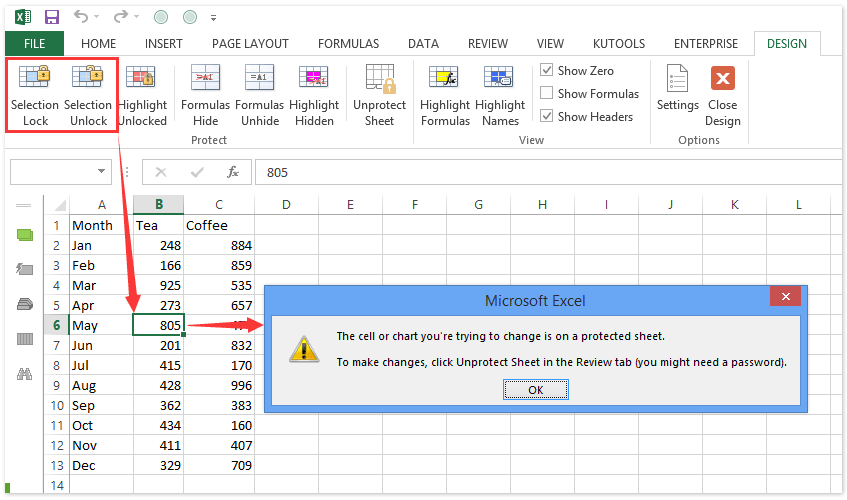5 Ways to Lock Your Excel 2016 Sheet Fast

Excel spreadsheets often contain critical data, formulas, or structures that users want to protect from accidental changes or unauthorized access. Whether you're working on a financial model, a project plan, or simply a list of personal data, securing your Excel sheets is an essential skill. In this detailed guide, we'll explore five efficient methods to lock your Excel 2016 sheet, ensuring that your data remains secure and intact.
Method 1: Using the Protect Sheet Feature

Excel 2016 includes a built-in feature to lock individual sheets within a workbook. Here’s how to use it:
- Open your Excel workbook and navigate to the worksheet you wish to lock.
- Select the ‘Review’ tab from the ribbon menu.
- Click on ‘Protect Sheet’. A dialog box will appear.
- Set a password if you wish to add an extra layer of security.
- Specify the actions users can perform while the sheet is protected, like selecting cells, formatting cells, etc.
- Click ‘OK’ to apply the protection.
🔐 Note: If you choose to set a password, make sure to remember it. There's no way to recover or reset a forgotten password through Excel itself.
Method 2: Protecting the Entire Workbook

Sometimes, you might need to lock not just one sheet but the entire workbook to prevent changes to its structure. Here’s how:
- Go to the ‘Review’ tab and click on ‘Protect Workbook’.
- In the dialog box, you can choose to ‘Protect structure and Windows’, which will lock the layout and window arrangements.
- Optionally, set a password.
- Press ‘OK’ to protect the workbook.
📝 Note: This method prevents users from adding, moving, deleting, hiding, or renaming worksheets. It also prevents resizing or closing workbook windows.
Method 3: Using VBA Macros to Lock a Sheet

For those comfortable with VBA, automating sheet protection can be efficient:
- Press Alt + F11 to open the VBA editor.
- Insert a new module by selecting Insert > Module.
- Enter the following code to lock a sheet with a password:
Sub LockSheet()
Dim ws As Worksheet
Set ws = ThisWorkbook.Sheets(“Sheet1”)
ws.Protect Password:=“yourpassword”, DrawingObjects:=True, Contents:=True, Scenarios:=True
End Sub
🚀 Note: VBA macros can significantly enhance productivity by automating repetitive tasks like sheet protection.
Method 4: Protecting Cells Individually

Instead of locking the entire sheet, you might want to protect specific cells or ranges:
- Select the cells you want to protect.
- Right-click and choose ‘Format Cells’ or press Ctrl + 1.
- In the ‘Protection’ tab, make sure ‘Locked’ is checked. Cells are by default locked, but this does not take effect until you protect the sheet.
- Now, protect the sheet following the steps from Method 1, allowing users to edit cells that you did not lock.
🔓 Note: Users can still edit cells that are not locked even when the sheet is protected.
Method 5: Using the Worksheet Options

Another straightforward way to lock a sheet is through Excel’s worksheet options:
- Right-click on the sheet tab you want to lock.
- Select ‘Protect Sheet’ from the context menu.
- The same options as in Method 1 will appear. Adjust them as needed and confirm.
🛑 Note: This method provides quick access to sheet protection without navigating through menus.
By employing these five methods, you can protect your Excel sheets in various scenarios, ensuring data integrity and preventing unauthorized or accidental changes. Each method offers a different level of control and can be chosen based on your specific needs for locking your Excel sheet.
What’s the difference between ‘Protect Sheet’ and ‘Protect Workbook’?

+
‘Protect Sheet’ locks individual sheets, controlling who can edit content or structure. ‘Protect Workbook’ locks the workbook structure, preventing changes like adding or deleting sheets, but doesn’t affect individual sheet protection.
Can I still edit protected sheets?

+
Yes, when you protect a sheet, you can choose which actions are permitted. You can allow users to edit specific cells or perform certain actions like sorting, filtering, or formatting cells.
What if I forget the password?

+
If you forget the password for a protected sheet or workbook, there’s no built-in method to recover or reset it within Excel. You might need to seek third-party software to bypass protection, or, if possible, recreate the data from backups or other sources.
Is it safe to use VBA macros for protection?

+
VBA macros are safe for protection when written properly. However, ensure macros are from trusted sources, as they can contain malicious code. Always enable macro security settings in Excel to mitigate risks.



